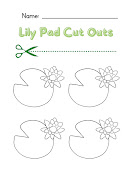🐸 Fantastic Frog Facts
Leaping into Learning with Nature’s Amphibious Wonders
Frogs aren’t just for fairy tales and rainy-day rhymes; they’re fascinating, funny, and full of surprises! These warty (or sometimes smooth) super-hoppers come in all shapes, sizes, and colors, and each one has a role to play in nature’s chorus.
Ready to hop into some incredible frog facts? Let’s go!
🌎 Frogs Live Everywhere
Frogs can be found on every continent except Antarctica!
They live in rainforests, deserts, ponds, trees, and even underground.
- Tree frogs have sticky toes to help them climb.
- Some frogs burrow into the sand and wait out dry seasons underground!
🐸 Frogs Are Amphibians
The word amphibian means “double life.” Frogs begin their lives in water as tadpoles, then grow legs and lungs to hop on land!
- Tadpoles breathe with gills, just like fish.
- As they grow, they lose their tails and develop lungs to breathe air.
👅 Frogs Eat with Their Eyes
Yes, you read that right! Frogs actually use their eyes to help swallow food. Their eyes sink down and push food toward their throat. Weird... and wonderful!
- Most frogs eat insects, worms, and spiders.
- Larger frogs can eat mice, birds, and even other frogs!
🐸 Froggy Sounds Are Everywhere
Each frog species has its own unique croak, chirp, or ribbit sound, reminiscent of banjos or barking dogs.
- Male frogs sing to attract a mate or defend their territory.
- The loudest frog is the Coqui from Puerto Rico. Its call can be heard for miles!
🐸 Special Superpowers
- Frogs can jump more than 20 times their own body length. Imagine YOU jumping across the classroom!
- Some frogs freeze in the winter and thaw in the spring like magic.
- Poison dart frogs wear bright colors as a warning; don’t lick that frog!
💚 Frog Feelings of Gratitude
Frogs teach us about transformation, patience, and the importance of listening closely.
Try this gratitude prompt:
“What helps YOU grow, like a tadpole turning into a frog?”
Responses might include:
- Encouragement from friends
- Time spent in nature
- Learning something new that felt hard at first
🐸 The Frog Life Cycle: From Tadpole to Hoppy Hero!
Frogs don’t start out jumping and croaking; they go through a fantastic transformation called metamorphosis, which means changing shape as they grow. Let’s leap through the four main stages of a frog’s life:
🥚 Stage 1: Egg
Frog moms lay hundreds of tiny jelly-like eggs in water.
Each egg resembles a dot inside a transparent bubble and contains a future frog!
“The pond is full of promise!”
🐛 Stage 2: Tadpole
After a few days, the eggs hatch into wiggling tadpoles.
They swim like fish and breathe through gills, no legs, no lungs, just a tail and lots of energy!
“Tadpoles are nature’s little swimmers.”
🐸 Stage 3: Froglet
This is the halfway point! Tadpoles begin to grow legs, shed their tails, and develop lungs for breathing air.
They look like tiny frogs with a stubby tail still hanging on.
“It’s time to hop, not flop!”
🐸🌿 Stage 4: Adult Frog
When the tail is gone and the body is fully formed, the frog is ready to leap into life!
Adult frogs hop on land, lay eggs in water, and sing songs like ribbit, croak, or chirp to communicate.
“From egg to leap; what a journey!”
🐸 Fantastic Frogs Activity: “Lily Pad Leap of Thanks”
Kids channel their inner frogs and hop into meaningful reflection while building a garden of lily pads with thankful thoughts.
🎨 What You’ll Need:
- Green paper or cardstock for lily pad cutouts
- Markers, crayons, glue, scissors
- Optional: googly eyes, pipe cleaners, glitter for decorating frogs
- Frog coloring sheet or printable frog shapes
- Frog facts to read aloud as an intro or science station
🐾 Activity Instructions:
Part 1: Lily Pad Gratitude Garden
Each child decorates a lily pad and writes something they’re thankful for:
- “The sound of rain on my window”
- “Time to be quiet and calm”
- “My jumping feet!”
Place the lily pads around the classroom to create a hop-worthy gratitude trail.
Part 2: Frog Friend Creation
- Cut out or color a frog shape to sit atop their lily pad.
- Optional: Add speech bubbles like:
- “I leap for joy when I see my friends!”
- “Hoppy to share my snack!”
Part 3: Movement & Science Tie-In
- Play a game of “Frog Facts Freeze”: Call out a fun frog fact (like “Frogs use their eyes to swallow”) and have kids leap, then freeze and act it out.
- You could also introduce mini science centers with magnifying glasses, tadpole lifecycle diagrams, or sound samples of frog calls.
💚 Extension Ideas:
- Create a giant display titled “Our Lily Pad of Thanks”
- Write a short poem called “Five Little Thankful Frogs”
- Add a “Tadpole-to-Frog Gratitude Journal” that tracks how students grow emotionally through kind actions and reflections
- Hello, Frog by Isabel Otter
- The Wonderful World of Frogs by Mimi Jones
- Go Wild Frogs by Alicia Klepeis









No comments:
Post a Comment